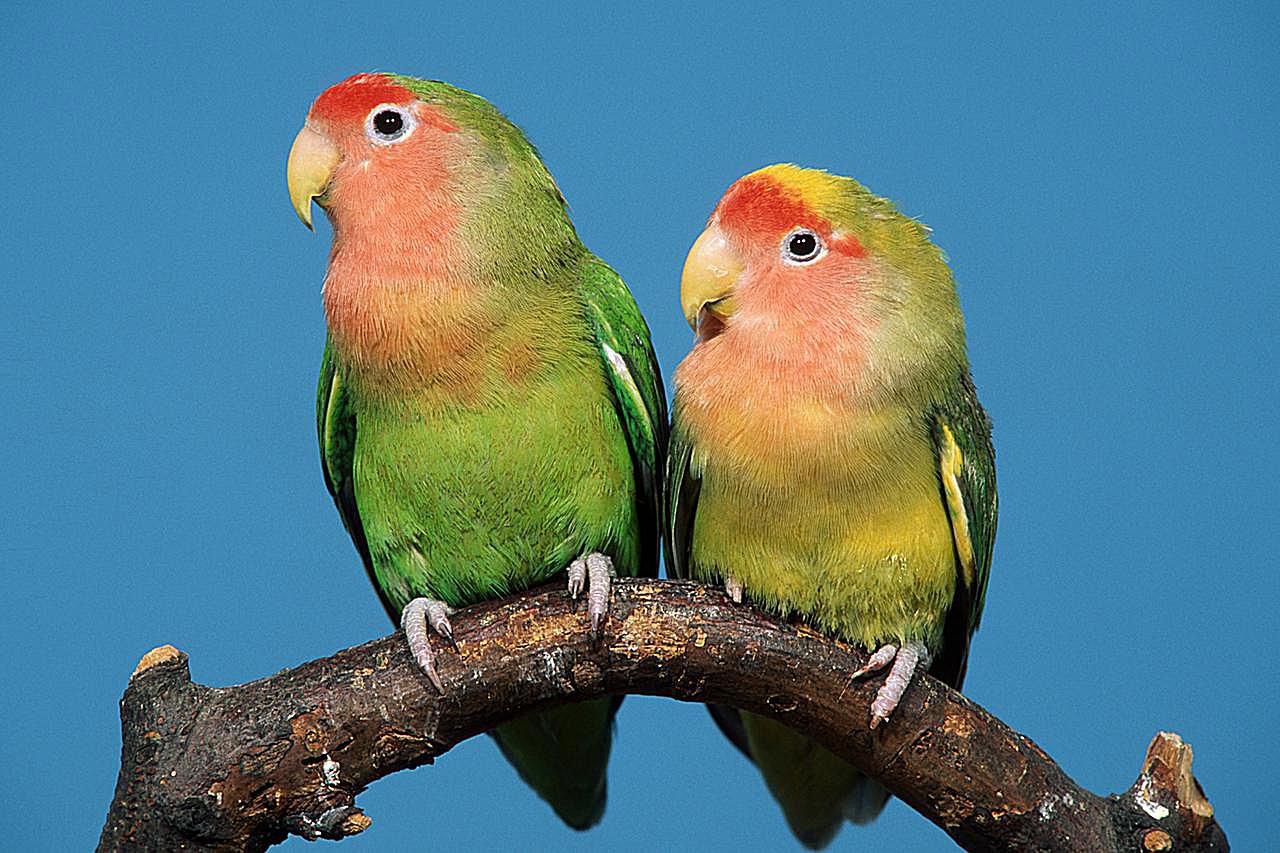
Scientific Name: Agapornis
Description:
- Appearance: Lovebirds are small, stocky parrots with a short, blunt tail. They are known for their bright, varied plumage, which comes in a range of colors depending on the species. Common colors include greens, yellows, reds, and blues.
- Size: They are among the smaller parrot species, typically measuring about 5 to 7 inches (13 to 17 cm) in length.
- Sexual Dimorphism: There is minimal visual difference between males and females, making it difficult to determine gender without genetic testing or surgical sexing.
Lifespan:
- Lovebirds generally live for 10 to 15 years in captivity, though they can live longer with excellent care.
Habitat:
- Natural Habitat: Lovebirds are native to the forests and savannas of Sub-Saharan Africa and Madagascar.
- In Captivity: They require a well-sized cage to allow for flight and movement, as well as toys and perches for mental and physical stimulation. Regular out-of-cage time in a safe, bird-proofed area is also essential.
Behavior:
- Social Interaction: Known for their affectionate nature, they are typically very social and do well with companions, either with another lovebird or regular interaction with their human families.
- Vocalization: They are quite vocal, known for their chirps and chatter, but they are not known for mimicking human speech.
- Activity Level: Lovebirds are active and playful and need various toys and activities to keep them engaged and prevent boredom.
Diet:
- In the Wild: Their diet mainly consists of seeds, fruits, berries, and vegetation.
- In Captivity: A balanced diet for a lovebird includes high-quality pellets, fresh fruits and vegetables, and a limited amount of seeds. Fresh water should always be available.
Health Care:
- Veterinary Check-ups: Regular check-ups with an avian vet are important for preventive health care. They can be prone to conditions like respiratory infections and nutritional deficiencies.
- Signs of Illness: Be alert to changes in behavior, appetite, feather condition, and droppings, which can indicate illness.
Breeding:
- Breeding in Captivity: Lovebirds can breed readily in captivity, but responsible breeding requires an understanding of their needs, including a suitable nesting site and balanced nutrition for the breeding pair.
Conservation Status:
- Most lovebird species are not currently endangered, but habitat destruction and the pet trade pose threats to some species.
Tips for Potential Owners:
- Companionship Needs: Consider getting a pair to prevent loneliness, but be aware that paired birds may bond more with each other than with humans.
- Time Commitment: They require daily interaction and socialization, especially if kept singly.
- Space Requirements: Ensure you have adequate space for a large enough cage and for the bird to fly safely when out of the cage.
Conclusion: Lovebirds are charming and affectionate companions, ideal for those who can provide them with social interaction, mental stimulation, and a loving environment. Their small size and playful nature make them popular pets, but they require dedicated care to ensure their well-being and happiness.
